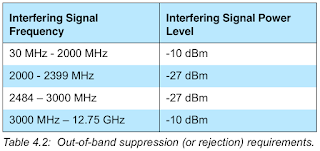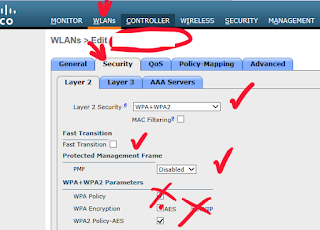Using Bluetooth to Debunk the Dual 5 GHz Myth

What does Bluetooth have to do with 5 GHz Wi-Fi? Nothing. Bluetooth operates in the 2.4 GHz frequency band. If you look in the right spot, however, Bluetooth can teach you something about 5 GHz Wi-Fi. Specifically, the Bluetooth 5.0 specification can teach you that Dual 5 GHz access points are a bad idea. This blog's opposition to Dual 5 GHz access points (APs) is not news to long time readers. The ' Two Radios Are Better Than One (Unless They're Both 5 GHz) ' blog post, which details how Dual 5 GHz APs (like Cisco 3800 Series APs , for example) make enterprise Wi-Fi less stable, is nearly three years old. Today's re-stating of the pitfalls of dual 5 GHz radio APs is due to something I uncovered while reading about Bluetooth. I was reading the Bluetooth 5.0 specification in search of anything that might affect Wi-Fi when I happened upon this table: The middle rows of the table is most dramatic, showing that out-of-band RF activity can ...
